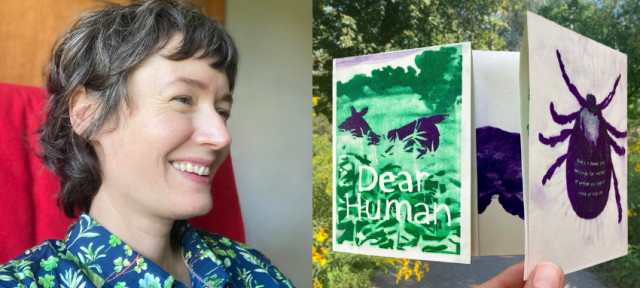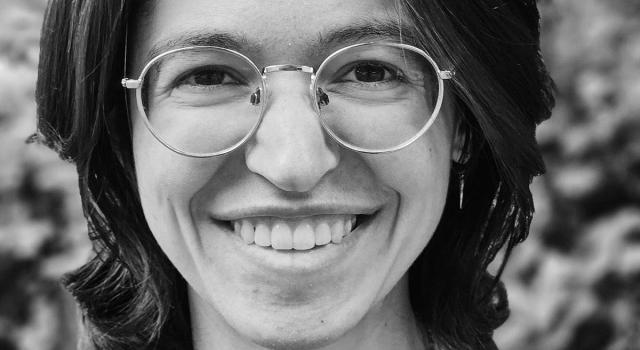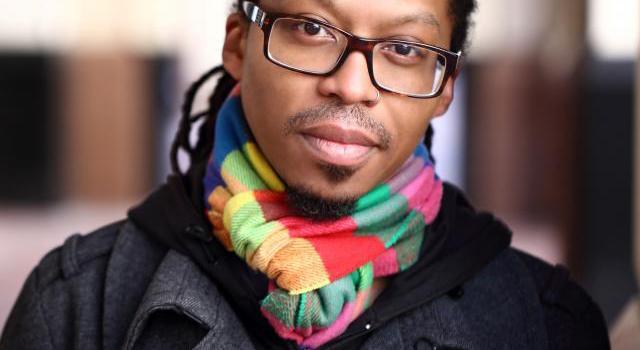Introducing Adjunct Assistant Professor of Studio Arts and Visual Culture Christa Donner

Hampshire College is pleased to welcome a substantial cohort of new professors to campus to support its growing enrollment and fall class.
Professor Christa Donner is an interdisciplinary artist whose practice combines material exploration with social exchange. Working across a range of media, such as large-scale drawing, sound installation, and small-press zines, she creates multilayered projects that are both intimate and community centered.
Before joining Hampshire’s faculty, Donner taught at the School of the Art Institute of Chicago for 15 years. There she designed courses focused on creative research, graphic narrative, multisensory making, and social exchange. She also taught drawing and printmaking at Northwestern University, the University of Illinois at Chicago, and UMass Amherst.
Donner earned her B.F.A. from the Cleveland Institute of Art and an M.F.A. from the University of Illinois.
What are you passionate about when it comes to this work?
Artmaking is a sensibility: a relationship to the world experienced through the senses and to the long history of image-making. It can also be a powerful tool to disrupt, heal, and shape public imagination. As an educator, I’m passionate about building a classroom community that supports experimentation, offering students tools to articulate their ideas with clarity and confidence.
Have you been in any other professions that had an impact on how you teach and learn?
Beyond my work as an artist and educator, my professional practice includes critical writing, collaborative curatorial projects, and arts administration. For more than a decade, I published essays and reviews in the magazines Proximity, Dialogue, Punk Planet, and Friction, as well as interviews and writing for Cultural ReProducers, the artistic platform and website I founded in 2012 to engage the creative balancing acts of cultural workers raising children.
Before earning my M.F.A., I was exhibition and public relations coordinator for SPACES, a 5,500-square-foot nonprofit gallery in Cleveland, which is committed to emerging and experimental artists. That led directly to curatorial projects for other galleries and museums and taught me a variety of approaches to defining and sustaining a creative practice that continue to inform my teaching and making.
Tell us about your work.
My drawings, installations, and audio walks have been exhibited internationally — for example, projects for the NTU Centre for Contemporary Art (Singapore), the Max Planck Institute for the History of Science (Berlin), BankArt NYK (Yokohama), Chiaki Kamikawa Contemporary Art (Cyprus), and the Museum Bellerive (Zurich) — and throughout the United States.
I’ve collaborated with historians of science at the Max Planck Institute for the History of Science; worked with teens at the Blue Sky Project, in rural Illinois; and was recently invited, as an artist-in-residence, to create a work at Yale-NUS College, in Singapore. One of my recent projects was “Dear Human,” a multispecies audio walk I created for the West Ridge Nature Preserve in Chicago, which brings together human voices from that community into hopeful, speculative conversation with local nonhuman residents. You can read more about my work on my website.
What are you looking forward to at Hampshire?
I’m so much looking forward to working with the Hampshire community to think creatively around multisensory storytelling and ecological engagement. I’ll be teaching a class called EcoSensory Studio, a studio art course that activates the five senses as entry points for creative research and ecological exchange. It’s a class that feels like a perfect fit for this interdisciplinary community.
How do you hope to engage with our new curricular model?
As someone with a passionate interest in biodiversity, the body, and the power of narrative, I’m excited to exchange ideas with students and colleagues through Hampshire’s Learning Collaboratives. The way Hampshire brings together folks from many areas of expertise to engage urgent challenges makes so much sense, and yet it’s something I haven’t seen happening elsewhere. I’m excited to see where it will take us.



